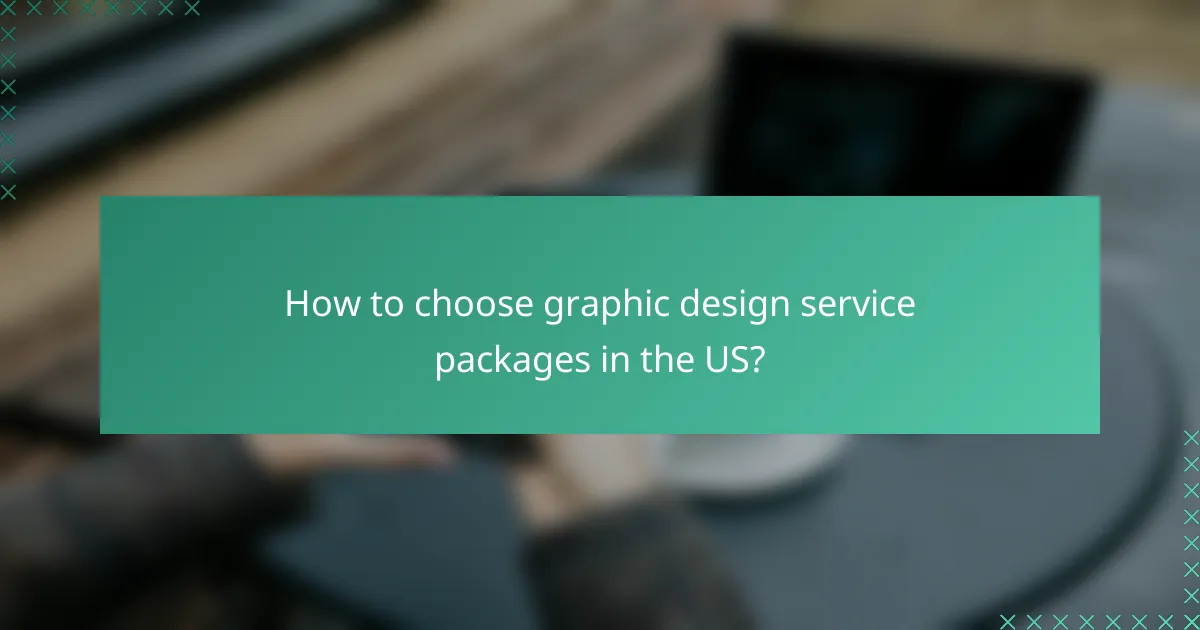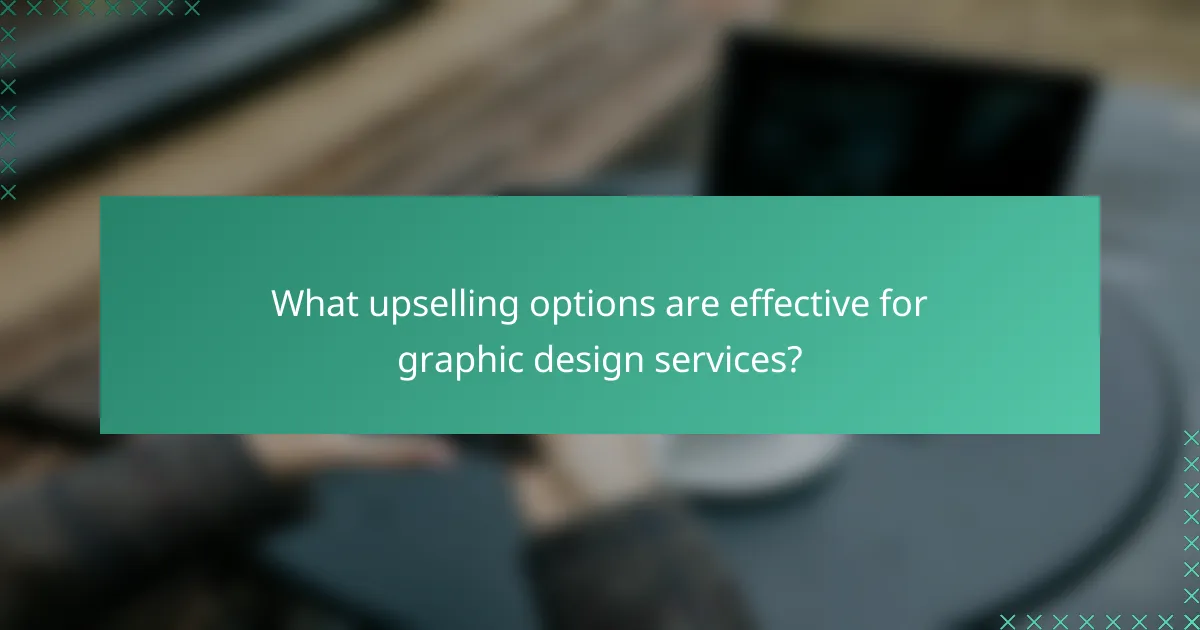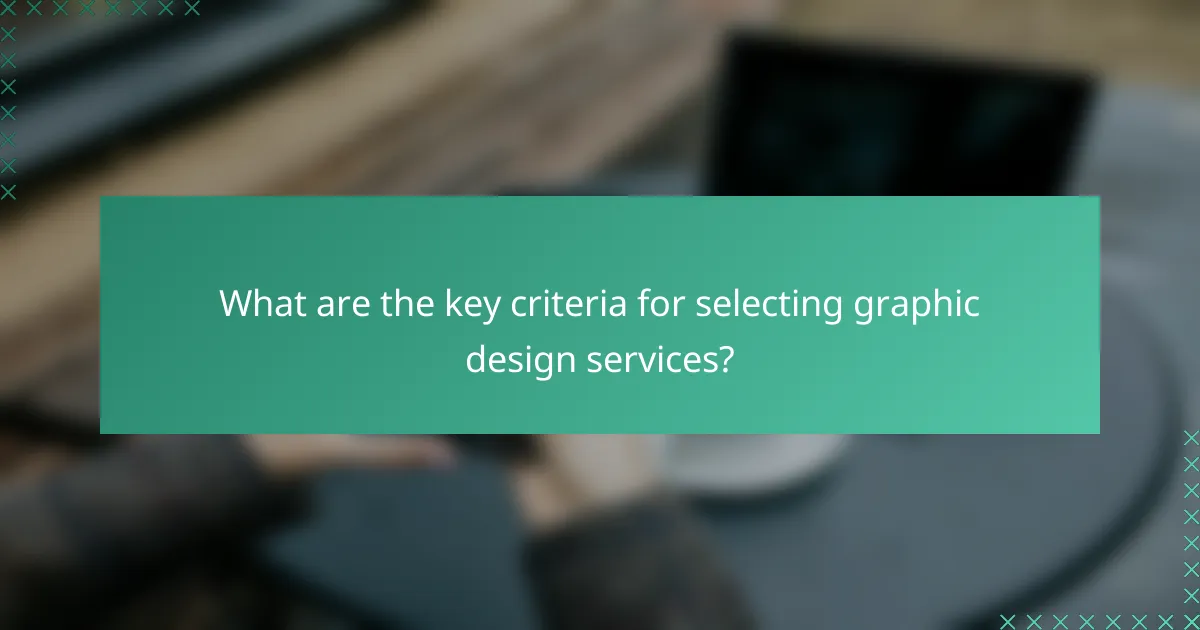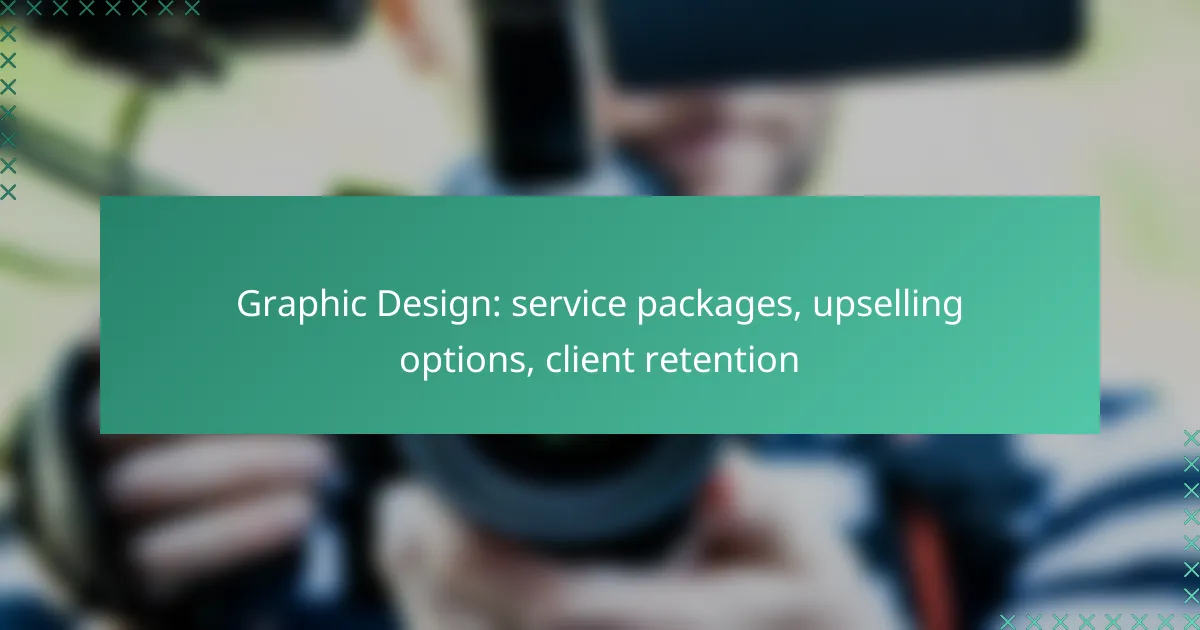In the competitive world of graphic design, selecting the right service package is crucial for aligning with your business goals and budget. By offering tailored upselling options and fostering strong client relationships, you can enhance project value and improve client retention, ensuring long-term success for both your clients and your design business.

How to choose graphic design service packages in the US?
Choosing graphic design service packages in the US involves assessing your business needs, budget, and the level of expertise required. Startups may benefit from basic packages, while established brands often need premium options that offer more comprehensive services.
Basic package for startups
A basic package for startups typically includes essential services such as logo design, business card creation, and simple marketing materials. These packages are generally budget-friendly, often ranging from $300 to $800.
When selecting a basic package, consider your brand’s identity and the specific materials you need to launch effectively. Avoid opting for overly complex designs that may not resonate with your target audience.
Premium package for established brands
Premium packages cater to established brands and usually encompass a wider range of services, including advanced branding strategies, social media graphics, and website design. Prices for these packages can vary significantly, often falling between $1,500 and $5,000 or more.
These packages are ideal for brands looking to enhance their market presence. Focus on the quality of design and the experience of the designer, as these factors can greatly impact your brand’s perception.
Custom package for specific needs
A custom package allows businesses to tailor services according to their unique requirements, which can include specialized projects like packaging design or advertising campaigns. Pricing for custom packages is usually flexible, depending on the scope of work.
When considering a custom package, clearly outline your objectives and desired outcomes. This approach ensures that the designer can deliver results that align with your vision and business goals.

What upselling options are effective for graphic design services?
Effective upselling options for graphic design services include offering complementary services that enhance the client’s primary purchase. These can significantly increase the overall value of the project while providing clients with a more comprehensive solution.
Branding add-ons
Branding add-ons can include logo variations, brand guidelines, and additional collateral like business cards or letterheads. These services help clients maintain a consistent brand identity across various platforms, which is crucial for recognition and trust.
When proposing branding add-ons, consider the client’s existing materials and how the new designs will integrate. Offering packages that bundle these services can make it more appealing, often at a discounted rate compared to purchasing them separately.
Social media graphics
Social media graphics are essential for maintaining an active online presence. Offering tailored graphics for platforms like Instagram, Facebook, and LinkedIn can enhance a client’s engagement and visibility.
Consider creating a package that includes a set number of posts or templates for a monthly fee. This not only provides ongoing work but also ensures the client has a cohesive look across their social media channels.
Website design enhancements
Website design enhancements can include additional features such as landing pages, SEO optimization, and mobile responsiveness. These improvements can significantly impact a client’s online performance and user experience.
When discussing website enhancements, focus on the potential return on investment. For example, explain how a well-designed landing page can improve conversion rates, making the upsell more attractive. Offering a tiered pricing structure for different levels of enhancements can also cater to various budgets.

How to improve client retention in graphic design?
Improving client retention in graphic design involves building strong relationships and providing ongoing value. By implementing strategies such as regular follow-ups, exclusive offers, and feedback sessions, you can enhance loyalty and encourage repeat business.
Regular follow-ups
Regular follow-ups are essential for maintaining client relationships in graphic design. Schedule check-ins after project completion to discuss satisfaction and future needs. This proactive approach demonstrates your commitment and keeps you top-of-mind for upcoming projects.
Consider setting reminders to reach out every few months, even if it’s just a friendly email. This can help you identify new opportunities and reinforce your presence in their business ecosystem.
Exclusive offers for returning clients
Offering exclusive deals to returning clients can significantly boost retention rates. Consider providing discounts on future projects or bundled services that add value. For instance, a returning client might receive a 10% discount on their next design package or a free consultation for a new project.
These incentives not only reward loyalty but also encourage clients to engage with your services more frequently. Make sure to communicate these offers clearly through your newsletters or direct communications.
Feedback and improvement sessions
Conducting feedback and improvement sessions is a vital step in retaining clients in graphic design. Schedule regular meetings to discuss project outcomes and gather insights on what worked well and what could be improved. This shows clients that you value their opinions and are committed to enhancing your services.
Use these sessions to propose new ideas or adjustments based on their feedback, which can lead to further collaboration. Aim for a constructive dialogue that fosters trust and encourages clients to share their future design needs with you.

What are the key criteria for selecting graphic design services?
When selecting graphic design services, focus on portfolio quality, client testimonials, and service flexibility. These criteria help ensure you choose a provider that aligns with your vision and can adapt to your needs.
Portfolio quality
Portfolio quality is crucial as it showcases a designer’s style and capabilities. Review a range of their past projects to assess if their aesthetic matches your brand’s identity.
Look for diversity in their work, including different styles, formats, and industries. A strong portfolio often indicates versatility and experience, which can be beneficial for your project.
Client testimonials
Client testimonials provide insight into a designer’s reliability and professionalism. Seek feedback from previous clients to gauge their satisfaction and the designer’s ability to meet deadlines and communicate effectively.
Consider platforms like Google Reviews or design-specific sites where clients share their experiences. Positive testimonials can significantly influence your decision, while negative ones may raise red flags.
Service flexibility
Service flexibility refers to a designer’s ability to adapt their offerings based on your specific needs. This can include adjusting project scopes, timelines, or even payment plans to accommodate your budget.
Discuss potential upselling options that can enhance your project, such as additional revisions or complementary services like branding or web design. A flexible designer is often more invested in your success and can provide tailored solutions.

How does pricing vary across different graphic design packages?
Pricing for graphic design packages can differ significantly based on the services included, the complexity of the projects, and the experience level of the designer. Typically, packages range from basic offerings for startups to comprehensive solutions for larger businesses, reflecting varying levels of customization and deliverables.
Standard pricing models
Standard pricing models in graphic design often include fixed packages, hourly rates, and retainer agreements. Fixed packages provide a set list of services for a predetermined price, making budgeting easier for clients. Hourly rates can vary widely, typically ranging from $25 to $150 per hour, depending on the designer’s expertise and location.
Retainer agreements offer clients ongoing access to design services for a monthly fee, which can be cost-effective for businesses with continuous design needs. This model fosters long-term relationships and ensures priority service for clients.
Hourly vs. project-based pricing
Hourly pricing is straightforward, charging clients for the actual time spent on a project. This model can be beneficial for smaller tasks or when project scope is unclear. However, it may lead to unpredictable costs, making it essential for clients to establish clear expectations upfront.
Project-based pricing, on the other hand, involves a flat fee for the entire project, which can provide clients with a clear budget. This model is often preferred for larger projects where the scope is well-defined. Designers should ensure that all deliverables and timelines are clearly outlined in the agreement to avoid misunderstandings.
